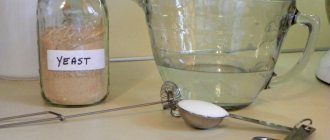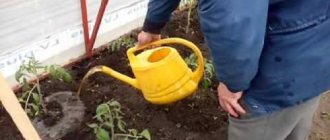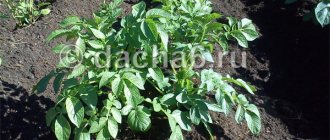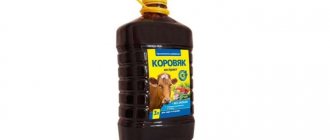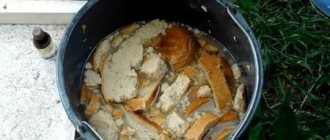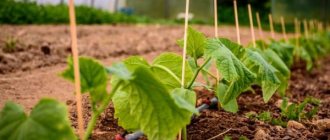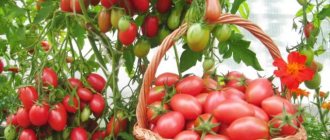Advantages and disadvantages of droppings as fertilizer when growing cucumbers
Bird droppings in vegetable growing are used as organic fertilizer. Unlike other types of organic matter, this is a concentrated fertilizer with a high content of macro- and microelements. The absorption of nutrients from manure by plants is as fast and efficient as mineral fertilizers.
When growing cucumbers, manure is used for basic soil application (in autumn, spring) and plant feeding during the growing season.
Content of macroelements in % in the main types of litter.
| Type of litter | Nitrogen | Phosphorus | Potassium | Calcium | Magnesium |
| Chicken | 1,6 | 1,5 | 0,8 | 2,4 | 0,7 |
| Goose | 0,5 | 0,5 | 0,9 | 0,8 | 0,2 |
| Duck | 0,7 | 0,9 | 0,6 | 1,1 | 0,2 |
In addition to the main minerals, the litter contains trace elements: manganese, cobalt, zinc, iron.
Advantages of manure as fertilizer for cucumbers:
- unlike other types of organic matter, it acts quickly;
- slowly decomposes with the release of nutrients up to 2-3 years;
- contains a significant amount of macro- and microelements;
- does not increase soil acidity;
- increases immunity to diseases;
- repels mole crickets and other pests with its smell;
- accelerates plant development and fruit ripening time by 1-2 weeks;
- increases yield by 20-40%, improves fruit quality;
- enriches the composition and properties of the soil (growth of beneficial microflora, inhibition of pathogens, increased looseness and fertility).
Another advantage of manure is its low cost compared to mineral fertilizers.
The litter also has its disadvantages. Fresh droppings emit toxic gases, become a medium for the development of pathogenic microorganisms and a source of unpleasant odor. In addition, it quickly loses nutrients.
In fresh droppings, the bulk of the nitrogen is in the form of uric acid, which inhibits the growth of seedlings and young cucumbers. Gradually, the substance is converted into urea and then into ammonium carbonate, which is nitrified in the soil. Therefore, oversaturation with droppings leads to the accumulation of nitrates in cucumber fruits.
Fresh droppings are toxic to plants. It contains a large number of water-soluble metabolites, which, upon contact with plant tissues, lead to burns, illness and even death.
For these reasons, the composition is not suitable for fresh use. Fresh droppings must be processed.
Advice from experienced summer residents
To avoid making the mistakes of most beginners, use useful tips from experienced summer residents :
- Do not fertilize cucumbers with fresh chicken feces. The concentration of uric acid in them is high and can burn the root system. Apply fertilizer only in the form of weakly concentrated solutions;
- chicken droppings have a very unpleasant pungent odor. To get rid of it, leave the droppings in the open air for a while so that the smell disappears;
- If, when applying fertilizer, the solution gets on the leaves of cucumbers, immediately wash them with water so that they do not get burned;
- Collect chicken droppings along with straw or hay and store in buckets or bags. If you want to keep it for a long time, get a special box.
Processing methods
The droppings may contain helminth eggs. Therefore, all work with it is carried out in closed clothing and gloves. Several methods are used to process litter at home.
Composting
When composting manure, organic matter decomposes under the influence of aerobic microorganisms. The temperature inside the compost rises to +60°C, which leads to the death of pathogens, helminth eggs and weed seeds.
The essential elements of compost are organic components. These are straw, sawdust, plant tops, paper, trimmed branches, and mown grass. Their quantity should be at least 1/3 of the total mass, and with high humidity of the litter - 1:1.
The simplest composting method is to make a tall pile, layering manure and other components. Compost will mature faster if it sits in a hole.
The optimal parameters of the pit are 1.5 × 2 m, depth 1 m. A drainage layer of river sand is laid at the bottom of the pit. All components are placed on it one by one. The surface of the pit is covered with peat, straw, spandbond, stems or boards. Polyethylene film, which does not allow air to pass through, is not suitable for this.
After 1.5-2 months, compost can be used as a fertilizer for application to the soil and local fertilizing. With prolonged infusion (up to 6 months or more), the compost is converted into humus. It can be used as clean soil, a nutrient additive and a soil loosener in a cucumber bed.
Fermentation or fermentation
This processing method produces the same results as composting. The litter is mixed 1:1 with straw, silage, grass clippings or sawdust. The mixture is spilled with an aqueous solution of a fermentation accelerator - the drug Baikal EM-1. The drug is diluted 1:1000, the consumption rate is 5 l per 1 m², the thickness of the treated layer is 20 cm.
As the mixture accumulates, it is raked into piles with an average height of 1 m. Every 10 days the pile is mixed so that the bottom layer is on top. In the hot season, the pile is lightly moistened with water before mixing.
The readiness of the fertilizer depends on the season: in summer after 30 days, in winter - after 50 days. Used in the same way as compost.
Water infusion
A concentrated water infusion can be prepared at the beginning of the season and used throughout the summer to fertilize vegetable crops. The extraction of active substances from the litter occurs over a long period of time, so it does not lose its properties.
To infuse, you will need a small barrel or other container with a lid. The container is half filled with any droppings and filled to the top with water. Cover with a lid and leave. After 5-7 days, the concentrate for feeding is ready.
Soaking
Quite a labor-intensive method. This is the gradual washing away of excess uric acid with water.
Fresh droppings are placed in a container and filled with water. After two days, the water is drained and fresh water is added. The procedure is repeated up to 5-7 times.
The substrate can be used to prepare aqueous solutions and add cucumbers between rows. Soaked droppings cannot be applied directly to the roots.
Making compost
For those gardeners and gardeners who do not keep chickens and other poultry, this method of preparing fertilizer is ideal. To do this, purchase litter, straw, and peat. The preparation method takes place in 4 stages.
- First. Dig a hole in your garden plot or take a barrel.
- Second. Place peat at the bottom of the hole or barrel, and sprinkle straw or sawdust on top of it.
- Third. Then you need to make two layers of chicken droppings and straw (sawdust).
- Fourth. Leave the fertilizer to rot for at least 2 months. During this time, it will ferment and be processed naturally.
Tip #1. To improve compost processing, you can add earthworms to the pile.
Preparing a compost pit in a summer cottage
Bedding
It is convenient and practical to use bedding in areas where birds are kept. For bedding in the chicken coop, use: chopped straw, sawdust from deciduous trees or peat. The best option is a mixture of straw and dry sphagnum peat.
The litter prevents the loss of nutrients. As it accumulates, it is raked into a pile, which is spilled with EM preparation to speed up the readiness. Fresh litter is suitable for adding to the soil in the fall and preparing a water infusion.
Drying
It is impossible to dry litter at home without large losses of nutrients. Such fertilizer does not bring much benefit.
The industrial method of processing litter is drying at a temperature of 600-800 °C. The final product can be purchased in the form of granular or powdered fertilizers. Popular fertilizers: “Florex-N”, “Sotka”, “Fasco”, “Gardener”, “Orgavit”.
Solutions for feeding from different types of bird droppings
The use of different types of litters is practically the same. To prepare a solution for feeding, make a water infusion, which is diluted with the optimal amount of water before use.
Chicken, pigeon and quail droppings
Chicken droppings are more toxic than other types. But, unlike other types of litter, which are very difficult to acquire, it is always available to vegetable growers.
Quail droppings are more effective than chicken droppings. It contains more organic components.
The composition and properties of pigeon droppings are very similar to chicken droppings. For fertilizer, droppings from domestic pigeon coops are used. It is better not to use urban pigeon droppings. Birds primarily feed from garbage dumps; their feces invariably contain harmful substances.
When preparing a solution, agronomists recommend adhering to the ratio of manure infusion and water: for root feeding 1:20, foliar dressing 1:30.
The widespread recommendation for using manure in a ratio of 1:10 with water often leads to severe burns and death of plants. It's better not to take risks.
Granulated dry chicken manure
The use of granular litter is somewhat different. During processing, the raw material is pressed and moisture is completely removed from it. The result is a particularly concentrated fertilizer.
Granular manure (a replacement for any organic matter) is added during the main digging of the site at the rate of 1 m²: in cultivated soils - 100 g, in uncultivated soils - 300 g.
For liquid fertilizing, the fertilizer is diluted with water in a ratio of 1:50 for young plants, 1:100 for adult plants. The solution is infused for 1-2 days. Consumption per plant is 0.5-1 liter, depending on the size of the bush.
Granulated droppings can be placed in the inter-row spaces away from the roots at the rate of 50 g per plant. In this case, with each watering, nutrients will be supplied to the roots of the cucumber in doses.
Duck and goose droppings
The droppings of ducks and geese are different from those of other birds. They contain more microelements, are more easily absorbed by plants and have a more gentle concentration.
Composts from these droppings contain beneficial worms and microorganisms and do not burn plants upon direct contact. They are introduced into planting holes without mixing with the soil.
Duck droppings are often used when growing cucumbers in greenhouses. To do this, it is mixed with sawdust or high peat (1:3), adding 20 kg per 1 m².
Water infusions of litters for liquid feeding are diluted:
- for foliar 1:20,
- for roots 1:10.
Using granular product
Granular manure has properties similar to fresh product, but this fertilizer has a number of advantages:
- Manufactured in a vacuum by quick drying. Thanks to this, all the beneficial qualities of the raw materials used are preserved.
- High temperature allows you to destroy pathogenic bacteria, helminths, and fly larvae. There is a loss of germination of weed seeds.
- No unpleasant odor characteristic of raw materials.
- Compact sizes. Thanks to this, the product is easy to transport and easy to store.
- Long shelf life.
- The packaging contains instructions for use and the required dosage.
- Availability of accurate information about the ratio of useful components, so you can correctly calculate the required proportions.
The granules are filled with water before use: 3 liters of warm liquid are consumed per 1 kg of fertilizer. The concentrate is infused for about a day, then diluted in 20 liters of water. The resulting solution is watered over the plants.
Each bush uses up to 0.5 liters of product. It is allowed to use granules to prepare the soil during digging. For each square meter, 100 g of product is consumed.
Scheme for fertilizing cucumbers
There are no differences in the fertilizer scheme for cucumbers in open ground and greenhouses. The only difference may be in the work itself, when you have to adapt to weather conditions.
Below is a complete nutrition plan for cucumbers for the season with a combination of manure and other types of fertilizers.
They begin to use litter for feeding cucumbers even at the age of seedlings. Fertilizing is carried out at the root after watering with water and light loosening.
The first feeding is done in the phase of formation of two true leaves. To do this, use a 1:20 solution of any bird droppings. Consumption 100 ml per plant.
The second feeding is carried out 5-6 days before planting the seedlings in the ground. This time, mineral components are added to 10 liters of manure solution: superphosphate 20 g, urea and potassium sulfate 10 g each. Consumption per plant is 100 ml.
The main soil fertilization is carried out twice - in autumn and spring. In autumn, fertilizers are distributed and dug up on the surface of the area allocated for cucumbers.
Fertilizers and norms per 1 m²:
- processed litter 5 kg;
- superphosphate 20 g;
- potassium salt 25 g;
- kalimagnesia 30 g.
If for some reason fresh droppings are not processed, they are simply mixed with straw, peat or sawdust in a ratio of 1:3 and applied to the soil during autumn digging. These materials accelerate the processing of toxic nitrogen compounds. By spring, the soil will be ready for planting cucumbers.
The second fertilizer is carried out 3-4 weeks before planting cucumbers.
Fertilizers and norms per 1 m²:
- processed litter 2-3 kg;
- superphosphate 15 g;
- potassium salt 10 g;
- kalimagnesia 30 g.
A week before planting, add 10 g (1 m²) of urea.
Cucumbers, in addition to the main fertilizer, also need 2-3 fertilizing with organic matter during the growing season. The first feeding is done by introducing manure or compost humus from the droppings into the hole for planting.
The second and third feedings are done with liquid solutions of infusion of the droppings. They are root and foliar. The second feeding (preferably foliar) is carried out 15 days after planting the seedlings, the third during the formation of the ovaries. Consumption of nutrient solution is 0.5-1 l per plant.
In addition to these fertilizers, cucumbers during the season need to be fertilized with potassium, phosphorus and, in rare cases, nitrogen (only with poor development).
What's better? Lying droppings or humus?
Manure has several states:
- Fresh, which is only obtained from animals.
- Half rotted. Up to six months from receipt.
- After a year, it is already considered rotten.
- And after a couple of days it becomes humus.
Both extreme types are not recommended. Because fresh contains many harmful compounds, and humus loses up to 3/4 of all beneficial substances in 2 years. The latter is good to use as a source of organic matter, but as a fertilizer it is almost useless.
In average states, harmful compounds have either disappeared or become different, so they no longer have a negative effect on vegetation.
General feeding rules
An overdose of fertilizers can destroy all plants. Therefore, during the procedure you need to carefully measure the doses of each substance. It is better not to report than to shift.
To avoid mistakes, the cucumber bed is divided into areas of 1 m². A measured dose of manure and other fertilizers is distributed on the surface of each square. They are immediately embedded in the soil to a depth of 15-20 cm. When exposed to air, the active substances of the fertilizers evaporate.
Foliar feeding is carried out according to the scheme or if the cucumber plantings are weakened and grow poorly. This is especially pronounced at the beginning of the growing season, when the roots of young plants develop poorly and cannot provide nutrition to the green mass. Nutrients are supplied through the leaves almost instantly, eliminating the deficiency of essential substances.
Fertilizing is carried out in dry and windless weather early in the morning or late in the evening. To do this, use a sprayer, from which the entire bush is sprayed from a distance of 15 cm. Better absorption of fertilizers occurs on the reverse side of the leaf, so the plants are completely wetted.
Root feeding must be combined with watering or carried out after rain on well-loose soil. The prepared solution is poured in a circle at a distance of 3-5 cm from the cucumber stem.
All mixtures are prepared before use. It is impossible to store ready-made products, so the excess after work is poured into compost or fed to other crops.
In the video you can see how to feed cucumbers growing in a greenhouse with bird droppings.
Liquid chicken manure
An infusion of natural droppings can be prepared according to the following recipe:
- You need to take the required amount of excrement.
- Add the mixture to a bucket of water and stir.
- Pour the infusion into a watering can.
- Water the cucumbers so that the solution does not get on the leaves and stems, away from the roots.
- After fertilizing, the cucumber bed must be watered well with clean, settled water, and any drops of solution that have fallen from the leaves and stems must be washed off.
Liquid chicken manure
The remains of chicken manure for cucumber solution can be fed to fruit bushes and trees. This will help get rid of some weeds and pests.
What fertilizers should you not combine litter with?
Combining droppings with some fertilizers results in loss of nutrients. The effectiveness of fertilizing decreases.
Fertilizers incompatible with manure:
- ammonium nitrate, nitrophoska;
- ammonium sulfate, ammophos, diammophos;
- sodium, calcium, potassium nitrate;
- precipitate;
- lime, ash.
The interval between fertilizing with manure and these fertilizers should be at least 1 month. Other fertilizers go well with the droppings.
How to prepare a greenhouse in the fall
First, we do some general cleaning, and then we clean up the house for the future harvest.
First of all, we remove all the tools, watering cans, hoes, supports supporting the plants, and more.
Completely remove all plant waste from the structure, as it can harbor harmful bacteria.
We wash the entire structure from the inside, including the covering, joints, lintels, and ceiling.
If the structure is made of metal structures, clean out rusty areas, prime and paint. If it is made of polycarbonate, wash the walls and ceiling with a solution of laundry soap or potassium permanganate.
Do all these simple steps carefully, and in the spring it is worth repeating the treatment of the walls and ceiling of the greenhouse again to be sure of the destruction of disease spores and infections.

